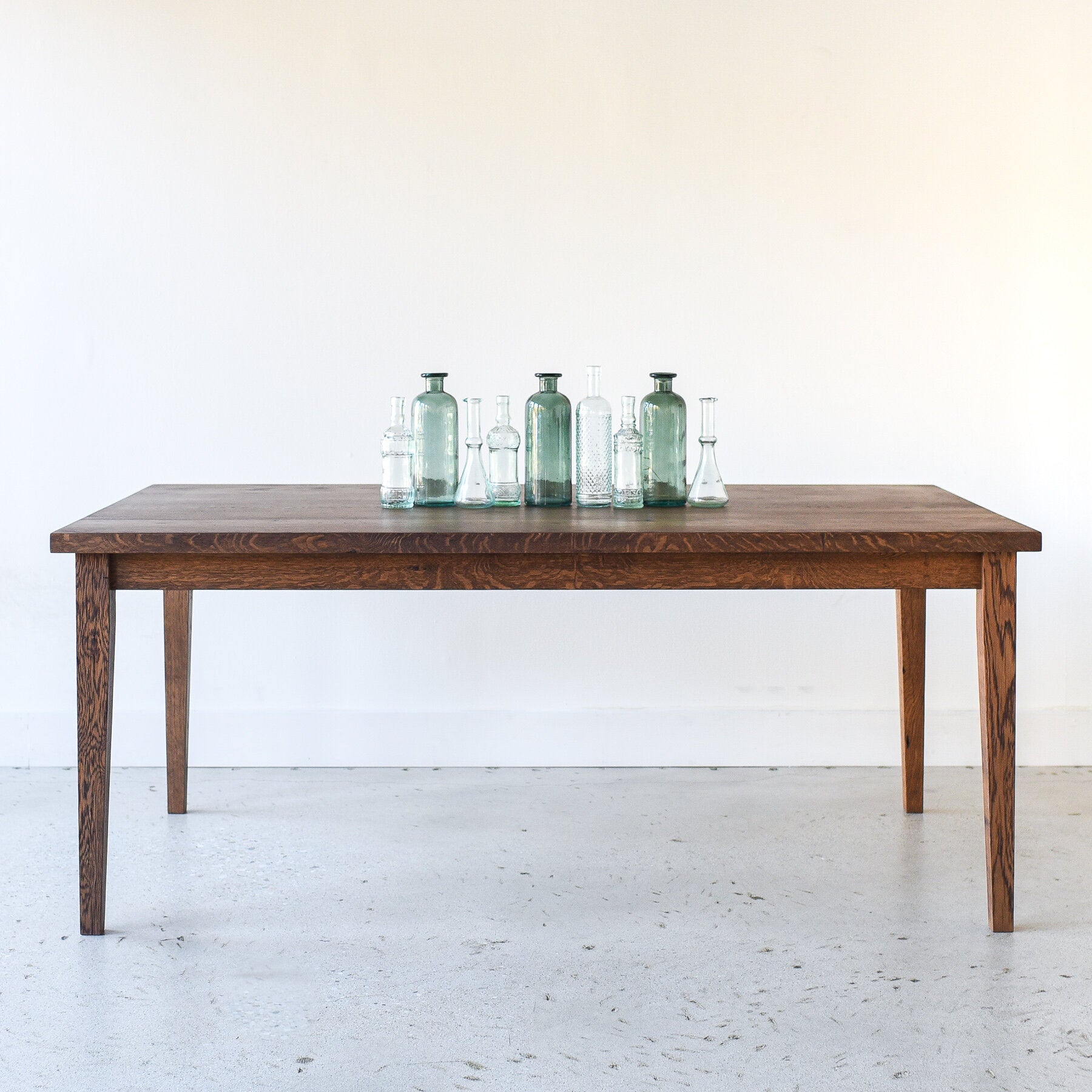Secret Elements to Bear In Mind for Dining Table Legs Timber Choices
When choosing timber for eating table legs, several critical elements require cautious factor to consider to guarantee both functionality and aesthetic allure. The option of timber type, identified by its longevity and special grain patterns, plays a critical function in the overall design and longevity of the piece.
Wood Types and Attributes
When picking wood for dining table legs, it is necessary to comprehend the special characteristics of different wood types. Various timbers offer unique benefits and negative aspects, influencing both the durability and visual allure of the ended up item.
Oak, understood for its remarkable sturdiness, also includes a prominent grain that can add character to the table. Cherry wood, with its abundant shade that grows over time, offers an extravagant appearance yet may require more upkeep to protect against scratches.
On the various other hand, softwoods like want and fir are a lot more cost effective and less complicated to function with, yet they are much less resilient than woods. Pine is lightweight and includes a cozy, rustic look, making it a popular selection for informal eating setups. Nonetheless, it is extra prone to scrapes and dents.
Recognizing these features will aid in making a notified choice to make sure the legs of the eating table satisfy both functional and aesthetic demands.
Grain Patterns and Aesthetic Appeal
The wood's grain is not simply a visual quality; it imparts an one-of-a-kind individuality and appeal to each item. Different wood species display unique grain patterns, ranging from the straight lines of maple to the intricate swirls of oak and the striking figure of walnut.
Moreover, the orientation and scale of the grain can affect the perceived size and style of the table. For circumstances, bigger, extra obvious grains might offer a vibrant, dramatic impact, while finer, subtler grains can create a refined, understated look. In addition, the completing procedure can even more improve these patterns, stressing the natural elegance of the timber and drawing out rich colors.
Inevitably, the option of grain pattern must balance with various other style aspects, such as the tabletop and surrounding furnishings, ensuring a natural aesthetic that elevates the eating experience. Thoughtful choice of wood grain not just adds to the table's elegance yet likewise reflects the proprietor's preference and style.
Sturdiness and Stamina
The resilience and strength of eating table legs are paramount factors to consider for making certain durability and security in any kind of eating room. Choosing the best timber is vital, as various types exhibit differing levels of resilience.

Ultimately, purchasing high-quality wood and robust construction methods will yield a table that stands the examination of time, while giving a reliable foundation for plenty of dishes shared amongst family members and close friends. Focusing on sturdiness and toughness makes certain that your table continues to be functional and cosmetically pleasing for many years to come.
Upkeep and Care
Correct maintenance and treatment are crucial for maintaining the longevity and toughness of table legs made from wood. Routine cleaning is essential; using a soft, damp look these up cloth makes sure that dirt and debris do not gather, which can lead to scrapes and monotony. It is recommended to prevent rough chemicals or rough materials that can damage the surface.
Furthermore, applying an appropriate wood gloss or wax occasionally can assist maintain the luster and shield the wood from dampness and spills. It is important to follow the maker's recommendations concerning the kind of product to utilize, as certain finishes might respond negatively to specific chemicals.
Moisture and temperature changes can additionally influence wooden table legs, causing them to warp or split. It's finest to place the table away from straight sunshine and warm sources. Dealing with these promptly can prevent additional damage. if the table legs have any scratches or dents.
Lastly, regularly inspecting the joints and screws for tightness is very important to keep architectural integrity (Dining Table Legs Wood). By adhering to these maintenance techniques, home owners can ensure their wooden table legs remain functional and description attractive for years to come
Environmental Considerations
When picking wood for eating table legs, it's important to take environmental considerations right into account. The sourcing and sustainability of timber are vital in lessening ecological influence. Choosing wood from licensed sources, such as those backed by the Woodland Stewardship Council (FSC), ensures that the wood is harvested sensibly, promoting woodland preservation and biodiversity.

Moreover, neighborhood sourcing of timber decreases transport discharges, sustaining local economic situations while reducing environmental influence. It is additionally recommended to be knowledgeable about the timber's therapy and finishing processes, as particular chemicals can be hazardous to both human health and the atmosphere. By prioritizing sustainable wood options, customers can contribute to environmental preservation while enjoying the resilience and appeal of their dining table legs.
Conclusion
In verdict, choosing timber for eating table legs necessitates careful consideration of numerous aspects, consisting of wood types, grain patterns, and toughness. The aesthetic charm of special grain patterns can enhance the overall style, while the stamina of woods makes sure longevity. Maintenance needs and environmental sustainability more impact timber selections, highlighting the relevance of sourcing from certified or redeemed products. A notified choice procedure inevitably adds to a practical and aesthetically appealing eating area that aligns with sustainable practices.
When selecting timber for eating table legs, numerous vital variables call for careful consideration to make sure both capability and aesthetic appeal.Correct upkeep and care are crucial for protecting the toughness and toughness of eating table legs made from wood.When choosing timber for dining table legs, it's important to take environmental factors to consider into account. By focusing on lasting wood choices, customers can contribute to environmental conservation while taking pleasure in the sturdiness and beauty of their dining table legs.
In conclusion, selecting wood for dining table legs necessitates cautious consideration of various factors, consisting of wood types, grain patterns, and sturdiness. Dining Table Legs Wood.